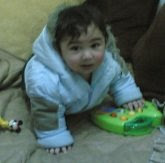These tricks seem smart but cause gains. Show pounds who's boss!
Fattening flub: eating a variety of foods
Why it doesn't work: We're hardwired to eat more when faced with a number of different choices. This mechanism gives us a slimming advantage when a spread consists of low-cal, filling fare such as veggies and lean protein. But unless you pass by the snack aisle and plant your cart by the produce bins, chances are your fridge is filled with variety of a different sort.
What does work: It's OK to have a few treats in the house, but limit your stash to one or two types—the rest of your shelf space should be reserved for a range of nutritious foods. Need ideas for what to do with all those veggies, fruit and whole grains? Search our database of delicious recipes.
Check out the rest of our Diet Survival Guide!
Why it doesn't work: If we're held to a single serving, we want to make it count. It's human nature—get your fill while you can. The problem is, if you load up your plate with a heaping pile of food, chances are you'll eat it all, says Madelyn Fernstrom, Ph.D., director of the Weight Management Center at the University of Pittsburgh Medical Center. Knowing you can go back for another helping if need be encourages you to put less on your plate the first time around and allows your body to register fullness before the second helping.
What does work: Begin retraining yourself to start off with at least 20 percent less than you're used to eating. Then after 20 minutes—the time it takes for us to start to feel full—gauge your hunger. Still have an appetite? Dig in again, but keep it reasonably portioned.
A 24-hour diet makeover: One woman kicks her cravings in a day with help from the experts.
Fattening flub: using exercise as an excuse to eat moreWhy it doesn't work: Unfortunately, exercise does not burn as many calories as we might think. Thirty minutes on the elliptical, for example, cancels out only one Reese's Peanut Butter Cup, says Ann Yelmokas McDermott, Ph.D., director of the Center for Obesity Prevention and Education at California Polytechnic State University in San Luis Obispo. If you're training for a sporting event, you may need to eat more to fuel your workouts—otherwise, consider regular exercise a keep-it-in-check tool, not a free pass to bulldoze your way through the mall food court.
What does work: Exercise—but not for the reasons you'd imagine. While cardio won't completely burn away a weekend binge, it does benefit health by increasing energy and lowering risk for heart disease. Another perk of busting a move? "Good behavior often begets other good behaviors," McDermott explains. Working out may make you feel good, so you eat better.
The best diet tool in town? Write it down!
Fattening flub: hanging a tiny cocktail dress on the closet door for motivationWhy it doesn't work: You may think the hopeful purchase of a little black dress or photos of thin models will encourage you to lose, but you'd be wrong. "Some women feel worse about themselves after seeing skinny models in ads. And if you feel bad about yourself, it's harder to stick to an eating and exercise plan," says Kathleen Martin Ginis, Ph.D., professor of health and exercise psychology at McMaster University in Hamilton, Ontario.
What does work: Focus on accomplishments, not shortcomings. "When you notice you're comparing your body to the girl next to you at the track, stop. Instead, think, I can run for five more minutes than I could a month ago," Martin Ginis says. And don't fixate on the end goal, such as the 20-pound loss. "Plan short-term goals, like 'I'm going to the gym three times this week, or I'm cooking a healthy dinner tomorrow,'" she suggests.
Real readers weigh in with their diet survival advice!
Fattening flub: thinking fruit and veggies are "free foods," so you can eat all you wantWhy it doesn't work: Produce is a must, but if you favor high-sugar, high-calorie dried fruit, fruit juice and starchy veggies, beware. "Peas, corn and potatoes are higher in calories than other high-water-content vegetables such as cucumbers and green beans," says Keri Gans, R.D., a spokeswoman in New York City for the American Dietetic Association. Plus, you need three to five servings of veggies each day and only two to four servings of fruit. "A piece of fresh fruit has 60 calories, and a serving of most vegetables has about 25," Gans says.
What does work: Pick water-rich veggies such as zucchini and spinach and high-fiber fruit such as apples and berries. And replace fatty sauces and dressings with low-cal ones such as salsa, fat-free ranch dressing and spritzes of lemon and lime. Then munch your way to your goal weight!
Source:http://shine.yahoo.com/channel/health/how-to-sidestep-5-big-diet-blunders-450689;_ylt=AurborbTWROLkaucyz0Lw6zWn414

0 comments:
Post a Comment